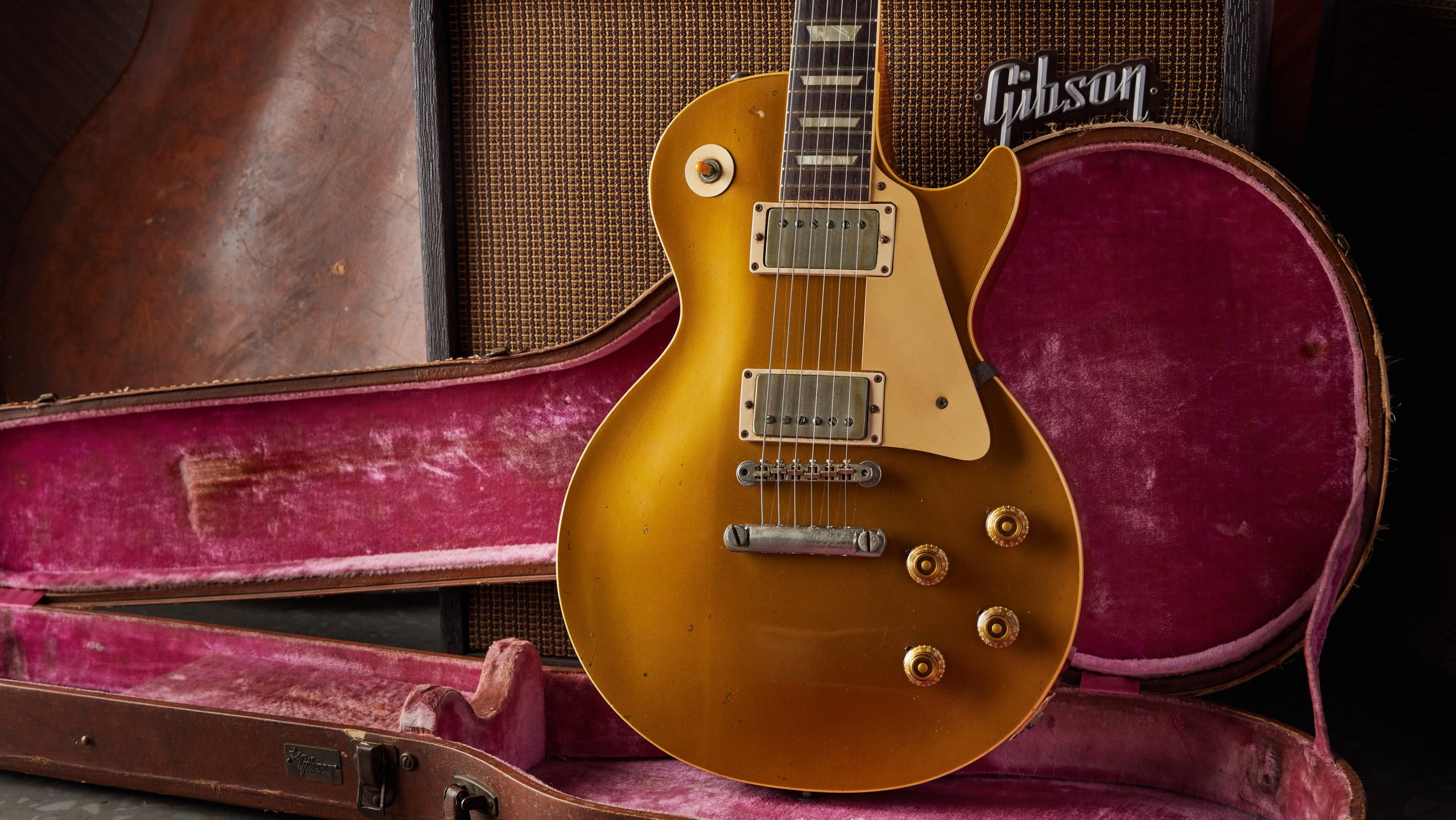Another holy grail guitar is available now via Gibson Certified Vintage
Gibson Certified Vintage is on a roll. Following the recent acquisition of a breathtaking 1959 Flying V™ (one of only 17 manufactured that year, and the close encounter I had with it is still causing sleepless nights), a recent drop saw the addition of an equally stunning 1957 Goldtop to GCV inventory.
Needing very little excuse to jump down the rabbit hole on the topic of vintage Gibsons, the Gibson Gazette caught up with Gibson Certified Vintage Program Manager Mitch Conrad to quiz him about this golden wonder of a 1957 Les Paul™, described by Mitch as “one of those guitars that makes you fall in love with guitar all over again.” Scroll onwards for the full conversation and detailed images.
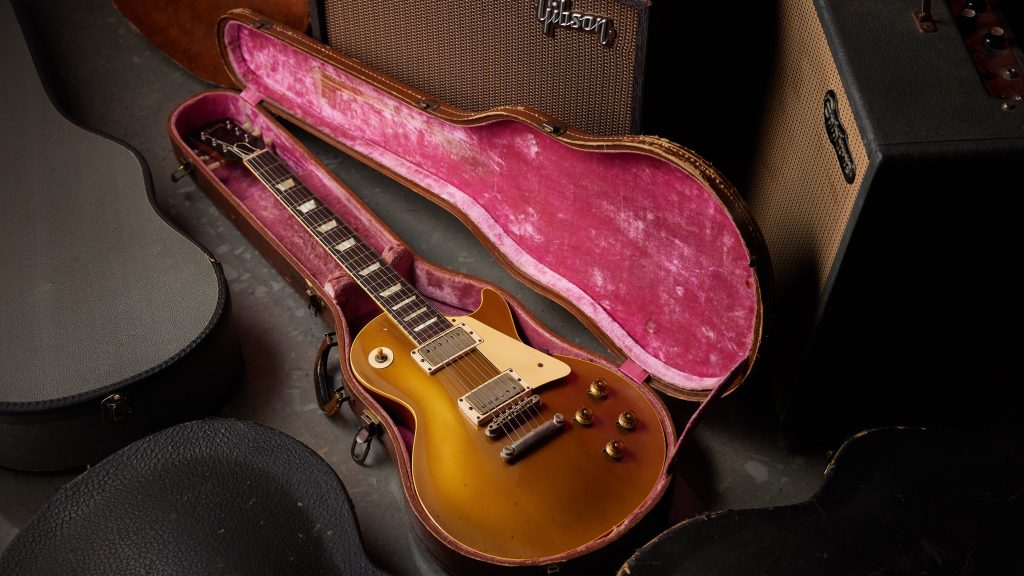
Image: This 1957 Les Paul ticks all the boxes for collectors and players alike (all images by Mitch Conrad)
Most people regard 1957 as a watershed year for the Gibson Les Paul Standard—all the major ingredients of the recipe are finally in place. How does it feel to get up close with a guitar like this and play it?
“Les Pauls from throughout the 1950s each offer their own unique playing experience—whether it’s the early trapeze tailpieces, wraparound bridges, or P-90 pickups, every year has its charm. But 1957 is a clear turning point. It’s hard to overstate how far out of the park the team in Kalamazoo hit it that year. This guitar feels like the culmination of all the design and tonal innovations that came before it. Aesthetically, functionally, and sonically, the ’57 Goldtop finds its stride. It’s balanced, bold, and incredibly expressive—a true force to be reckoned with in every way.”
What do we know about this specific instrument’s history?
“This guitar spent the majority of its life in Florida, where it remained with the same family for decades—passed down from grandfather to father to grandson. According to family lore, the grandfather bought it many years ago from a man who needed $100 for a bus ticket to Miami. It originally came in a chipboard faux alligator skin case (a fitting detail, given its Florida roots), though that case eventually gave way to time and wear. That said, kudos to the case—it did its job well. The guitar itself is in remarkably well-preserved condition, a testament to both its care and good fortune over the years.”
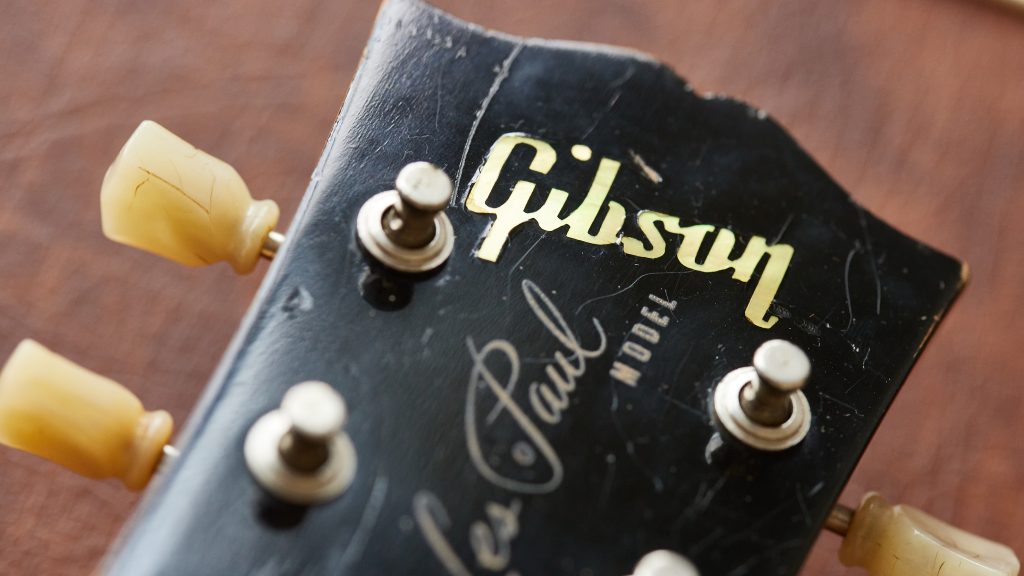
Image: The lower logo position on the headstock is characteristic of Gibsons from the mid-1950s era
There are people out there—Slash included—who argue that Goldtops have a slightly different tone to Bursts due to differences in the finish. Where do you stand on that conversation, and how do you feel about this guitar sonically?
“I think the truth is that every one of these guitars is a unique sum of its parts—wood density, moisture content, the time of year it was built, the weight, how many winds are on the pickup coils, how well the fingerboard is glued to the neck, how centered the headstock silkscreen is… okay, maybe not that last one, but you get the idea! Two 1957 Goldtops just a few serial numbers apart can sound completely different.
“That said, this particular guitar is exceptional. As soon as you plug it in and turn the amp up just a touch, it sounds like those old records we all love. It sounds like Clapton, Duane and Dickey, Billy Gibbons, and all the rest. It’s really transportive, like Joe Walsh may have handed this one to you backstage in 1969. One of our techs plugged it into a tiny bench amp during inspection, and even through that modest setup, the voice that came out was stunning. There’s something really special about this guitar.”
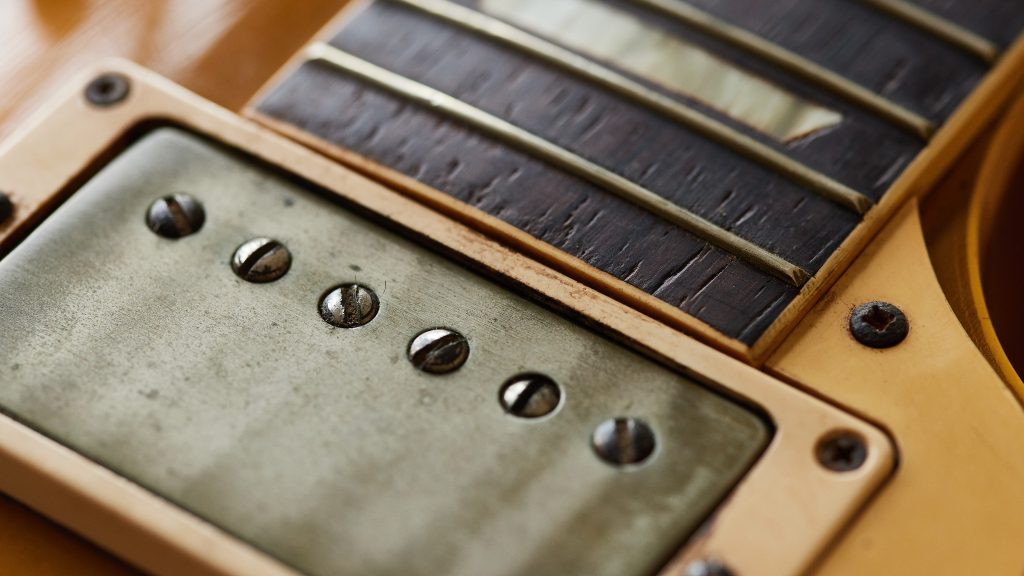
Image: The guitar comes complete with its original early “Patent Applied For” humbuckers with brushed nickel covers—the covers were not stainless steel, as is often incorrectly reported
It’s easy to forget that early humbuckers™ were designed to literally buck hum and not sound especially different from P-90s. Some of the 1957 Les Pauls I’ve played have had plenty of that slightly nasal or vocal quality, along with the growl and upper-harmonic content of a great P-90 Les Paul. How does this one stack up?
“This is such a significant point in understanding early humbuckers. I don’t think anyone had a complaint about the tonal quality of the P-90—Seth Lover was just trying to eliminate the hum. If the goal was to preserve that voice in a new double-coil, hum-eliminating design, and they were still using the same winders and the same 42 AWG plain enamel wire, it seems inevitable that these pickups would share so much sonic DNA. There’s that slightly nasal quality, with almost a honk to them—but with real body behind it. They’re clear, they’re spanky, they can get mean. They’re just exceptional.”
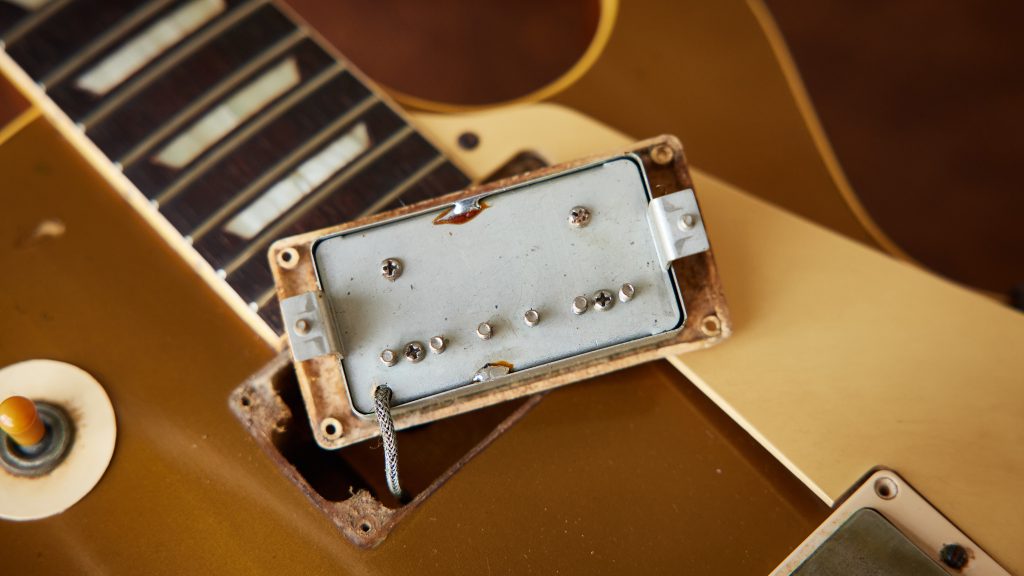
Image: No stickers were present on “Patent Applied For” humbuckers until later in 1957
Sometimes it’s possible to see a flicker of flame peeking through a Goldtop finish, or even to identify where the seams are in the maple, and whether it’s a two or three-piece top. Is that the case with this guitar?
“We’ve got a three-piece top hidden under the gold finish, but no major figuring to speak up. It’s best that way; it’ll help keep away the thoughts of, ‘I have always wanted a Burst…’”
How would you describe the neck dimensions? Are we talking full-fat or is there a softer shoulder like some of the earlier Goldtop necks?
“It’s a big neck, no doubt—but it fits in the hand really well. The lightly rolled fingerboard binding softens the edges just enough to let your hand settle in comfortably. This guitar is just incredibly well put together—one of those cases where everything feels right. Even with the smaller 1950s fretwire, it’s easy and comfortable to get around the neck. It has that ideal blend of substance and playability.
“This is one of those guitars that makes you fall in love with guitar all over again—it’s hard to put down, it looks cool, it feels great, and it sounds exceptional. It’s the full package.”
Find out more about this 1957 Gibson Les Paul Goldtop and browse the full Gibson Certified Vintage inventory.

